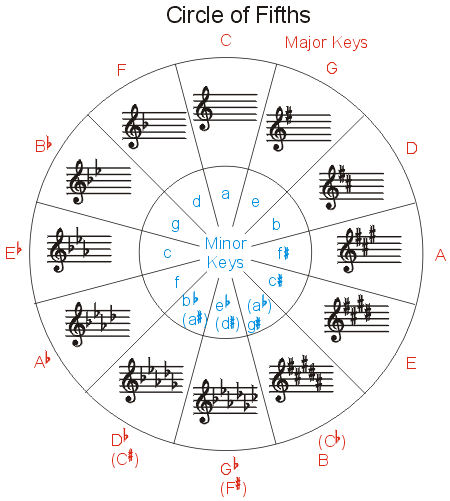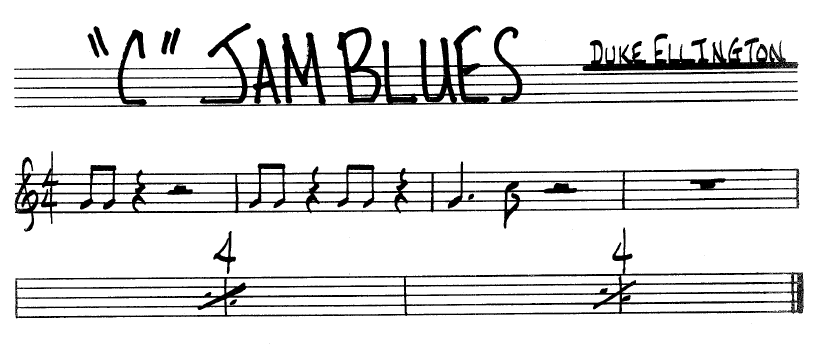
MUSIC 8A / 8B & Music 19~ JAZZ & LATIN PIANO
Professor Rebeca Mauleón-Santana
MWF, 11am-12pm, A215
Office: A 209; Tel: 415-452-5240
E-mail: rmauleon@ccsf.edu
Office Hours: MWF 12-1pm (By Appointment Only)
Professor Mauleón's Faculty Homepage
Syllabus
This course will teach some of the fundamentals as well as more advanced concepts of Jazz and popular Latin music styles, with an emphasis on harmony and analysis, strong rhythmic interpretation, and development of good left and right-hand independence. As we will have students of varying levels of experience, the Instructor will attempt to accommodate the class by either dividing the content throughout the week, or by assigning specific tasks for each level. I will indicate which materials or text pages should be used by each student according to his/her level. In this way we can cover similar concepts while students can expand their individual study and move at their own pace.
“Jazz speaks for life. The blues tell the stories of life's difficulties, and if you will think for a moment, you will realize that they take the harsh realities of life and put them into music only to come out with some new hope or sense of triumph. This is triumphant music.” - Dr. Martin Luther King Jr
"Jazz is America's classical music." - Dr. Billy Taylor
Learning Outcomes:
After successful completion of this course, students will be able to:
A. Distinguish and select the skills involved in playing a variety of popular jazz piano styles.
B. Formulate basic popular piano harmony for a given melody.
C. Prepare the melody in various ways.
D. Assemble left hand accompaniments integrating right hand melodic material.
E. Differentiate and construct stylistic differences in playing jazz, blues, Brazilian, Afro-Cuban and other musical styles.
F. Choose rhythmic variety in the interpretation of pieces.
G. Create and perform a piece of music from the standard Jazz piano repertoire.
Prerequisites: Students must have at least two years experience on piano, with knowledge of basic chords and scales. No previous jazz experience is necessary.
Texts: The Jazz Piano Book, by Mark Levine
On-Line Reading:
Materials: Some supplemental materials will be handed out for this course, including excerpts from the Instructor's publications. Be sure to print out the course materials and the selection of songs in the "Downloads" section (below). Please keep these materials in loose-leaf form in a binder, and bring the binder to every class! Also, here is a useful handout on Scales and Chords, published by Sher Music Co. For the unit on Cuban and Brazilian music, please read the following excerpt from Sher Music's Real Easy Book, Vol. 3: "Afro-Cuban Jazz" (by Professor Mauleón). Click here to listen to KQED Forum's History of Jazz Piano podcast from October 2008! NEW: Be sure to check out this useful Jazz Glossary! And here is a list of BLUES SONGS with partial audio fragments.
Assorted articles: Here are some useful articles from Keyboard Magazine fyi: "Go Fourth" (on quartal voicings a la McCoy Tyner), and "Improvise With Intervals."
Downloads: (print and put in your binder)
Songs: CLICK HERE to download the Tune List
* There are actually two blues tunes on this page; the first is "Blues By Five" by Miles Davis and below it is "Blue Seven" by Sonny Rollins
Listening via iTunesU: Students will be able to listen to many of the songs from our collection via iTunesU. You must have iTunes installed on your computer first. Here is a link in case you do not. Next, enter the following URL and be sure to bookmark it: http://www.ccsf.edu/~itunesu/index.php. At the prompt enter your student login, which is music8a8b_students, then enter your password: music8a8b. You will then see several play-lists; be sure to click "subscribe" for each play-list so the music can download to your computer.
Course Outline:
WEEKS I & II ~ REVIEW OF BASIC CONCEPTS
• Intervals
• Triads (Major, Minor, Diminished, Augmented)
• Inversions
• The Major Scale / The Major Modes
• The Circle of Fifths ~ Take time each day to study and memorize the circle diagram below.
Read: ~ Levine, Chapters 1 & 2 + Handout I
Warm-Up ~ Major Scales; Interval ear-training exercises (interval chart)

WEEK III ~ SEVENTH CHORDS
• Seventh Chord Types (Major, Minor, Dominant, Half-Diminished, Diminished)
• Inversions and other "voicings"
• Practicing Scales with Seventh Chords (Arpeggios, Modes)
Warm-Ups:
1) Scale exercise with modes: Major scale beginning on each sale tone through the order of the modes, such as in C Major - C to C (Ionian), D to D (Dorian), etc... Do in at least three keys.
2) Jazz Hannon exercise over major scale (in C,G,D,F,Bb);
3) Drills: Root position and inverted seventh chords of all types

WEEK IV ~ THE BLUES & RHYTHM CHANGES
• The Blues Scale
• The Blues Progression
• Left-Hand Possibilities (Block Chords, Walking Bassline, Boogie Feel, Stride)
• Minor Blues
• Rhythm Changes (Basic, variations, tunes)
All: Review Blues Handout (excerpt from Levine's, The Jazz Theory Book);
Beg-Int ~ Play Blues scale over block chords in at least 3 keys
Int-Adv ~ Play a Blues tune of your choice using at least two left-hand approaches.
Warm-Ups ~ Group "jam" over selected tunes.
Tunes: Au Privave, Blue Monk, Blues for Alice, Blues for Duane, Now's the Time, Footprints, I Got Rhythm, Oleo, Ornithology
See pianist Dick Hyman give a demonstration of various boogie-woogie styles on YouTube!
Watch two Maestros together: Oscar Peterson & Count Basie! (Slow blues in C):
Watch the late great Dr. Billy Taylor and Ramsey Lewis play "I Got Rhythm" ~
WEEK V ~ THE II-V-I PROGRESSION
• Root-position and Inversions
• Applying to a Tune
• Tritone Substitution
All Levels ~ Work from Handout III ("II-V Exercises"); Pick a Tune to work on utilizing the above techniques
Read: Levine, Chapter 2, 6
Suggested tunes: "Autumn Leaves," "Tune Up", "Satin Doll"
Warm-Ups ~ II-V exercises in all keys; add scales over II-Vs
WEEK VI ~ THREE AND FOUR-NOTE VOICINGS
• Root, Third and Seventh voicings (root in LH, 3rd and 7th in RH)
• Adding 5th or Extension(s)
• II-V-Is with three and four-note voicings
• Voicing a tune - melody note on top
Levine: Chapter 3; Handout: II-V-I Exercises
Warm-Ups ~ Cycle of II-V exercises, whole-step and half-step descending
Exercise: II-V-Is in all keys using 3 and 4-note voicings
Watch pianist Paul Schmeling demonstrate left hand "shell voicings" over a blues in Bb:
WEEKS VII & VIII ~ PLAYING TUNES
• The Melody and its Interpretation
• Harmonic Framework and Chord Selection (Voicings)
• Deciding on a Style or Approach (Playing the Melody or Accompanying a Vocalist or Instrumentalist; Selecting a Rhythmic Style)
• Comping & Improvising
• The Melodic Minor Scale & Modes
Levine: Chapter 21 "'Comping,"
Warm-Ups ~ Comping through changes
WEEK IX ~ REVIEW AND PREPARATION FOR MID-TERM EXAMS
WEEKS X & XI~ BRAZILIAN AND AFRO-CUBAN STYLES
• Bossa Nova & Samba
• Afro-Cuban patterns (son, son-montuno, cha-cha-chá)
All levels will study and learn basic rhythms for playing popular Brazilian and Afro-Cuban styles. Tunes will be analyzed as well as played.
Tunes included: Desafinado, Manha de Carnaval, Girl From Ipanema, Blue Bossa, Wave, Oye Como Va, Morning, etc...
Mauleón: Excerpts from 101 Montunos & The Salsa Guidebook
Warm-Ups ~ Afro-Brazilian & Afro-Cuban Rhythm Exercise Sheets; Bossa Nova patterns over selected chord progressions; Son-Montuno patterns over selected chords
Watch Brazilian Meastros Tom Jobim and João Gilberto playing "Girl from Ipanema"
See Tito Puente playing "Oye Como Va" (on YouTube)
WEEKS XII & XIII ~ EXPANDING THE HARMONY
• Dominant 9ths, 11ths, 13ths
• Tritone Substitution
• Sus Chords & "So What" Chords
• Quartal Voicings (4th Chords)
• Altered Chords
• Melodic Minor, Diminished and Whole-Tone Scale Harmony
• Upper Structures
Levine: Chapters 4, 6, 9, 12, 13, 14
Tunes: "Easy to Love," "Stella by Starlight", "So What"
Watch Bill Evans play "Stella by Starlight"
Dr. Billy Taylor and Dick Hyman play Tadd Dameron's "Hot House" (well-known bebop piece):
WEEKS XIV & XV~ REVIEW AND PREPARATION FOR FINAL EXAMS
NOTE: Students taking this course Credit/No Credit do not need to take the Mid-Term or Final Exams, but are required to attend as regularly as possible.
Course Calendar:
Schedule of important dates for SPRING 2014 ~ Note the Exam schedule is in BOLD.
Date(s) |
Item(s) |
Fri Jan 10th |
Instruction begins |
Mon Jan 20th |
HOLIDAY (MLK Day) |
Fri Jan 31st |
HOLIDAY (Lunar New Year) |
Fri & Mon Feb 14th & 17th |
HOLIDAYS (Presidents Weekend) |
Wed & Fri Mar 12th & 14th |
Mid-Term Performances |
Mon Mar 31st |
HOLIDAY (Cesar Chavez Day) |
Wed April 2nd - Mon April 7th |
SPRING RECESS |
| Fri April 25th | HOLIDAY (Faculty Flex Day) |
Mon & Wed May 12th & 14th |
Final Performances (May 14th is our last day of class!) |